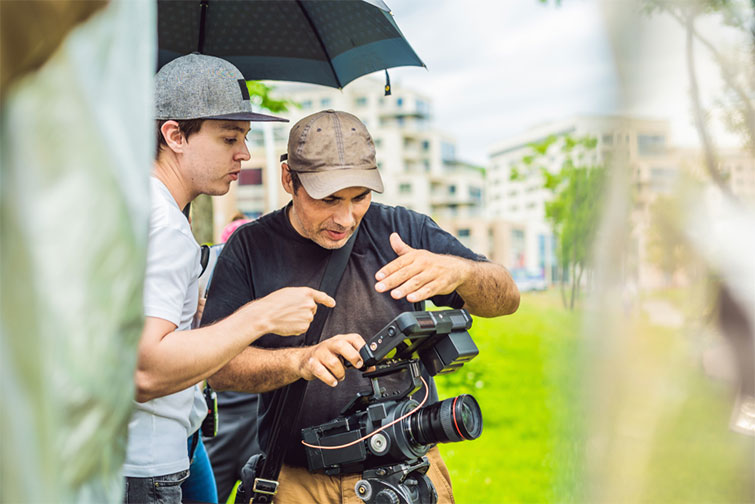
What to Charge for Videography Projects: A Handy Guide
Gear, travel expenses, the editing process — we discuss how to calculate just how much your video services are worth to potential clients.
So here you are. You’ve gone to film school (or you’ve done your homework, learning from online resources and YouTube tutorials). You know your craft. You have your camera. You have your gear. You’re ready to take on real, paying work in film and video production.
But, what do you charge?
If you ask around (and even check around online), you’re bound to get many different answers. Plus, for better or worse, many clients may preemptively tell you what your services are worth. (Hopefully they don’t just say “exposure!”)
The real answer, though, is personal. Here’s how you can begin to calculate it. And while this guide will help, it might not be exact. That’s good, though, because it’ll help you determine your precise worth — as well as how to explain it to potential clients.
What Is Your Time Worth?

Image by Elizaveta Galitckaia.
This is the biggest variable, and it changes from person to person. At the end of the day, if you take on a project and devote hours, days, or weeks to a client, you need to have an idea what your time is worth.
Your time should mean something to you. Not only is your time a representation of all the hard work you’ve put in so far — learning your craft and developing your skill-set — it also represents all the avenues of other work, development, and leisure that you’re missing out on by taking on a job.
A number I’ve often come across has been something in the ballpark of $600 a day for a competent video professional. Usually you can divide work terms into full- or half-day gigs (so $600 full or $300 half). But those numbers can be confusing, and people might assume it includes things like cameras, gear, travel, and expenses (which it shouldn’t — more on those below).
How Much Does Your Camera Cost?
In today’s professional video market, many videographers must provide their own camera and gear for shoots. This is all well and good for most, but sadly, it often creates work agreements that neglect the value of said equipment. Almost as if we’re all supposed to naturally exist with thousands of dollars in equipment that magically paid for itself.
If you’re taking on video work that requires you to provide your own camera and gear, those things cost money, so you should account for them in your fee. One of the easiest and most accurate ways to find a good rate to charge for your cameras is to simply look up the cost of renting said camera from an online rental house or agency.
This can also be helpful because you can send this link to your client to demonstrate what your gear is worth. (And sometimes you’ll need to work this way if you don’t own a camera, or need a specific one that you don’t own.)
How Much Have You Invested in Your Gear?

Image by GavranBoris.
Along with a camera, you’ll need to find a price that reflects the rest of the gear you’re including. If your client is asking for specific things like recording audio or professional lighting setups, you’re well within your rights to include the costs of the gear this requires. Price it as if you were going to rent it.
However, if your client is being vague or looking to work cheap — just because you might want to include your nice three-point lighting setup or new fancy drone for some shots — don’t be surprised if your client balks at paying for those things. Be prepared to explain why you’ll need which pieces of equipment.
Calculate Your Travel and Expenses
Perhaps the greatest error of omission in most professional video work is not including things like travel and expenses. For many just starting out, there’s a real pressure to work for cheap (if not for free). This might just be the way of the world in some places (and certain incidents), but eventually your value will increase, and cutting corners at your own expense won’t help you in the long run.
Travel can be a big one. Not only are you talking about time spent driving hours for shoots, but also the miles on your vehicle and gas in your tank. And that’s not to mention that for every shoot that doesn’t have a fully stacked craft services smorgasbord on set, you’re just eating away at your value every time you take a meal on your own dime.
The Cost of Editing (and Revisions)

Image by Jacob Lund.
If you’re working on a project that involves both shooting and editing (or just editing for that matter), pricing your time is just as important when working at the computer. The results are unfortunate when many editing projects are subjected to a baseline price for a “video edit.”
While you have to make those deals from time to time, they can quickly devalue your hourly rate — and leave you subject to endless revisions. Your best bet is to offer an hourly rate.
I’ve seen numbers ranging from $25 an hour to $75 an hour, for just basic Premiere Pro editing projects. You can be flexible, but the biggest way to ensure fair value is to be upfront about your expectations, based on the project. Even making just one small change and exporting out a new draft may take an hour, as your computer has to render and you’re left twiddling your thumbs.
Cover image by Maridav.
For more videography and industry advice, check out some of these articles below.






